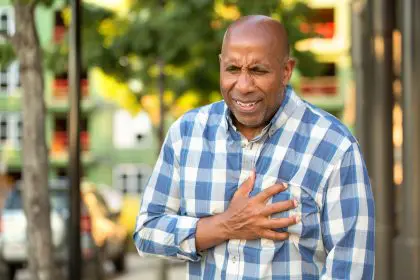Heart disease is the leading cause of death for both men and women in many countries around the world. A heart attack, which occurs when blood flow to a part of the heart is blocked, is a major event associated with heart disease. Recognizing the signs of a heart attack and acting quickly can significantly improve the chances of survival and minimize damage to the heart muscle. This is why it’s crucial for everyone in the family, regardless of age, to be familiar with the signs and symptoms of a heart attack.
Early action saves lives
During a heart attack, time is crucial. The longer it takes to receive treatment, the greater the potential for heart damage. By recognizing the warning signs and calling emergency services immediately, you can significantly increase the chances of a successful recovery for yourself or a loved one. Even if the symptoms seem mild or atypical, it’s always better to err on the side of caution and seek medical attention.
Heart attack symptoms don’t always look like the movies
Hollywood portrayals of heart attacks often depict a person clutching their chest and collapsing dramatically. While chest pain is a common symptom, it doesn’t always manifest in the same way for everyone. Some people experience no chest pain at all. Here’s a breakdown of some of the most common signs of a heart attack, recognizing these in yourself or someone around you can be lifesaving:
- Chest discomfort: This is the most common symptom, but it can vary greatly. It may feel like pressure, tightness, squeezing or a burning sensation. The discomfort may come and go or be constant.
- Pain or discomfort in other areas: Pain can radiate to other parts of the upper body, such as the arms, back, shoulders, neck, jaw or teeth.
- Shortness of breath: Difficulty breathing is another common symptom, often accompanying chest discomfort. It may feel like you can’t catch your breath, even when resting.
- Nausea, vomiting or indigestion: These symptoms can sometimes mimic heartburn or indigestion, but they can also be signs of a heart attack, especially in women.
- Cold sweat: Breaking out in a cold sweat — often accompanied by clammy skin — can be a sign of a heart attack.
- Lightheadedness or dizziness: Feeling faint or dizzy can occur during a heart attack, especially if there’s a significant drop in blood pressure.
- Extreme fatigue: Unusual and unexplained fatigue can be a warning sign, particularly in women.
Remember: Not everyone experiences all symptoms
It’s important to remember that not everyone will experience all of these symptoms, and the severity can vary greatly. Some people may only have one or two mild symptoms, while others may have several intense symptoms. If you or someone you know is experiencing any of these warning signs, don’t hesitate to call emergency services immediately.
Risk factors for heart attack
While a heart attack can strike anyone, certain factors can increase your risk. Understanding these risk factors can help you and your family take steps to prevent a heart attack:
- Family history: Having a close relative (parent, sibling, child) with a history of heart disease increases your risk.
- Age: The risk of heart attack increases with age.
- High blood pressure: Uncontrolled high blood pressure is a major risk factor for heart disease and heart attack.
- High cholesterol: High levels of LDL (“bad”) cholesterol and low levels of HDL (“good”) cholesterol can contribute to plaque buildup in arteries.
- Smoking: Smoking significantly increases your risk of heart attack and other cardiovascular diseases.
- Diabetes: Diabetes can damage blood vessels and increase your risk of heart attack.
- Obesity: Being significantly overweight or obese increases your risk of heart attack.
- Unhealthy diet: A diet high in saturated and trans fats, processed foods and added sugar can contribute to heart disease.
- Physical inactivity: A lack of regular physical activity is a risk factor for heart disease.
- Stress: Chronic stress can contribute to high blood pressure and other risk factors for heart attack.
Taking action for a heart-healthy family
There are many things you and your family can do to reduce the risk of heart attack:
- Know your family history: Talk to your family members about their health history, particularly regarding heart disease.
- Schedule regular checkups: Get regular checkups with your doctor to monitor your blood pressure, cholesterol levels, and blood sugar.
- Embrace a healthy lifestyle: Eat a heart-healthy diet rich in fruits, vegetables and whole grains. Limit saturated and trans fats, processed foods and added sugar. Aim for at least 150 minutes of moderate-intensity exercise per week or 75 minutes of vigorous-intensity exercise. Manage stress through relaxation techniques like meditation or yoga.
- Quit smoking: If you smoke, quitting is the single most important thing you can do to improve your heart health. Talk to your doctor about smoking cessation programs or medications that can help.
- Maintain a healthy weight: If you’re overweight or obese, losing even a moderate amount of weight can significantly improve your heart health.
Open communication is key
Having open communication within your family about heart health is crucial. Here are some tips:
- Family discussions: Schedule regular family discussions about heart health. Talk about risk factors, healthy lifestyle habits and the importance of recognizing warning signs.
- Encourage questions: Create a safe space for everyone in the family to ask questions and express concerns about their heart health.
- Lead by example: Make healthy choices yourself and encourage your family members to do the same. Cook healthy meals together, get active as a family and prioritize stress-management techniques.
By being informed about the signs of a heart attack, understanding risk factors and taking steps towards a healthy lifestyle, you and your family can significantly reduce the risk of heart attack and promote overall cardiovascular health. Remember, early action is critical. If you or someone you know is experiencing any potential heart attack symptoms, call emergency services immediately. Don’t wait to see if the symptoms go away – it’s always better to be safe than sorry.
This story was created using AI technology.















